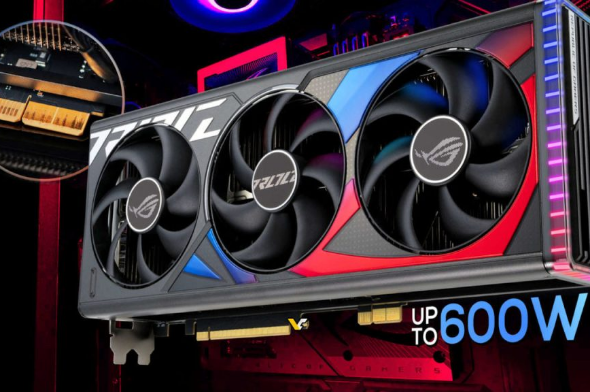Connection to DriversCloud Create a DriversCloud.com account Reset your DriversCloud.com password Account migration
ASUS announces a GeForce RTX 4090 without a single power cable: a real magic trick!
A new power supply system for increasingly energy-hungry graphics cards is being tried out by the Taiwanese manufacturer.
At CES 2024 in Las Vegas, the kings of graphics cards presented a number of new products. NVIDIA logically made official a range we've been waiting weeks for - the GeForce RTX 40 SUPER series, with three models scheduled for release on January 17, 24 and 31 - while AMD was a little more coy with just one new card for the start of 2024, the Radeon RX 7600 XT, scheduled for release on January 24, at the same time as the GeForce RTX 4070 Ti SUPER.
On these four new graphics cards, power consumption is not likely to be as crucial as on top-of-the-range models such as the GeForce RTX 4090, with the possible exception of the GeForce RTX 4080 SUPER. However, this is not stopping manufacturers from various horizons from thinking of new solutions to circumvent the problems encountered with the 12VHPWR connector introduced by NVIDIA. Problems that don't seem likely to affect many people, but which are clearly a problem for products at this price level.
ASUS is one of the most active in finding solutions, and its main idea is called BTF for Back To (the) Future, with the aim of getting rid of the power connector and associated cable(s) altogether. To achieve this, the brand has come up with a kind of extension to the PCI Express connector, through which power already flows. Called the PCIe High Power Connector, this extension leaves little doubt as to its purpose: to pass the power required by the graphics card directly through the motherboard and this PCIe extension. Two graphics cards were presented: the ASUS STRIX GeForce RTX 4090 BTF Edition and the TUF Gaming GeForce RTX 4070 Ti SUPER BTF White Edition.
Apart from the disappearance of the 8-pin or 12VHPWR power connectors and the appearance of the PCIe High Power Connector, these cards are identical to the brand's previous models. They do, however, require a rather special motherboard - also BTF - since it must feature the famous PCIe extension. On the motherboards shown, ASUS takes advantage of this to hide all the other connectors by placing them on the back of the board: the result is a more airy design, and better organization of those unsightly cables.
ASUS stresses that the PC's power supply unit must also be designed for such use, and points out that many case manufacturers have expressed interest (Aerocool, be quiet!, Cooler Master, Corsair, Inwin, Lian Li, Phanteks, Siverstone, Thermaltake). Finally, ASUS seems to have thought of everything, since in the event of a BTF graphics card needing to be connected to a non-compatible motherboard, a small adapter is available: attached to the graphics card's PCI Express extension, it accepts the connection of a power cable. Something to keep an eye on...









